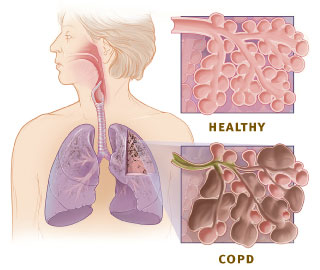Uric acid (UA) is the end product of purine metabolism in humans, and increased serum uric acid concentrations may lead to gout.
Purine is a nitrogenous base and an important component of DNA; DNA is composed of two types of nitrogenous base pairs called purines and pyrimidines.
Purine is metabolised in liver and gut to uric acid in human and higher mammals; excreted via kidney (Approximately 75%) and faeces (25%). In contrast, birds and reptiles excrete most of uric acid in feces. Purines are also synthesized from degradation of adenosine triphosphate (ATP) to adenosine monophosphate (AMP).
The average serum uric acid level in male is 416 µmol/L (Approximately 7 mg/dl) and in female is 340 µmol/L (approximately 5.7 mg/dl); {conversion factor, 1 mg/dL=59.48 µmol/L}. In case of male it ranges from 4-8.5 mg% and 2.5- 7.5 mg% in female. check here.
Rise in serum uric acid level is an important risk factor for gout and has other significant associations with human disorders, such as cardiovascular diseases like hypertension and renal diseases like uric acid stones.
Apart from many other risk factors like heredity, members of metabolic syndrome like obesity, diabetes mellitus; liver and kidney disease, alcohol consumption is an important risk factor for high uric acid level.
In a recent article published in The PlosOne, it has been seen by the researchers that beer among alcoholic beverage is associated with increased uric acid level, whereas wine is not.
This is because Beer is an alcoholic beverage with high purine content, whereas wine contains a minimal amount of purines and several nonalcoholic components, including antioxidants, vasorelaxants and stimulants of anti-aggregatory mechanisms.
| English: Cervantez, wine of Spain (Photo credit: Wikipedia) |
Thus, the effect of the purines ingested from beer on the serum uric acid (UA) concentrations may be sufficient to augment the hyperuricemic effect of alcohol itself. Whereas, the absence of an effect of wine may result from non-alcoholic components with antioxidant properties, such as polyphenols, which may mitigate the impact of alcohol on the serum UA concentration.
The accelerated synthesis of UA from adenosine, which is produced after the degradation of adenosine triphosphate to adenosine monophosphate, and reduced urinary excretion due to the elevation of blood lactate caused by the oxidation of ethanol may contribute the rise if UA in blood.
UA is the end product of purine metabolism in humans and higher primates; in contrast, other mammals further metabolize urate to allantoin. The absence of the hepatic enzyme uricase (urate oxidase) and/or efficient renal UA reabsorption contributes to the ten-fold higher UA blood levels in humans compared to those of other mammals.
UA is a powerful scavenger of peroxyl radicals, hydroxyl radicals and singlet oxygen in human biological fluids.
The balance between UA production and excretion determines serum UA concentrations; the daily production of urate is approximately 1000 mg (6 mmol) in adults. Approximately 75% of UA excretion occurs via the kidney, and the gastrointestinal tract eliminates 25%.
The balance between UA production and excretion determines serum UA concentrations; the daily production of urate is approximately 1000 mg (6 mmol) in adults. Approximately 75% of UA excretion occurs via the kidney, and the gastrointestinal tract eliminates 25%.
In the human kidney, urate handling involves urate glomerular filtration followed by a complex array of re-absorptive and secretory mechanisms taking place in the proximal tubule. The renal excretion of UA depends on the balance between filtration, secretion and re-absorption. As a result, approximately 10% of the UA filtered through the glomerular membranes is finally excreted.
The foods with high purine content include meat, especially the internal organs like liver and kidney, anchovies, mackerel, sardines, beef kidneys, brains, meat extracts (e.g., Oxo, Bovril), herring, game meats, sweetbreads, beer (from the yeast) and gravy.
In general, plant-based diets are low in purines. A moderate amount of purine is also contained in asparagus, cauliflower, spinach, mushrooms, green peas, lentils, dried peas, beans, oatmeal, wheat bran, wheat germ, and hawthorn. Purines are also created through the natural process of cell breakdown in the body.
You may like to know, how to keep a check to your rising serum uric acid level; please read more in Mayoclinic.
You may like to know, how to keep a check to your rising serum uric acid level; please read more in Mayoclinic.
...
Click here to Subscribe news feed from "Clinicianonnet; so that you do not miss out anything that can be valuable to you !!
...








